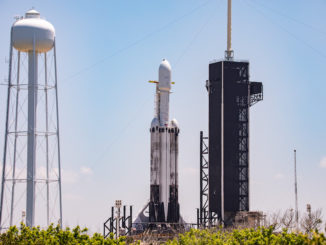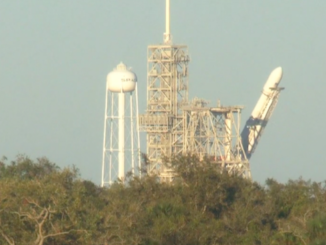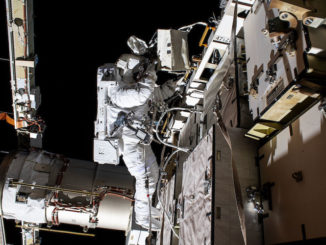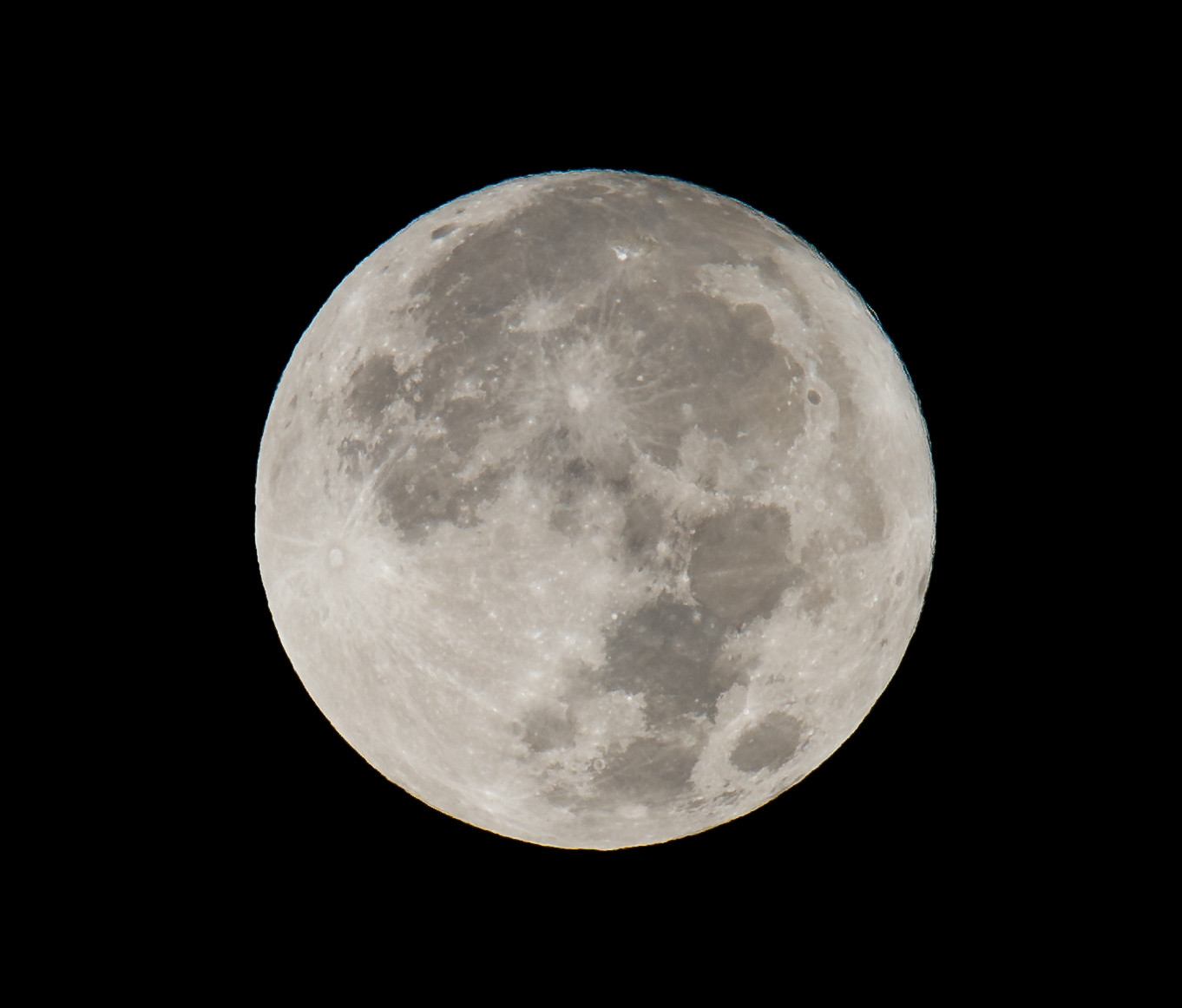
NASA announced Thursday it plans to purchase lunar soil from a commercial company, an effort the agency’s top official said is intended to set a precedent for the transfer of ownership of extraterrestrial material and stimulate a market harvesting resources from bodies throughout the solar system.
The initiative is starting small, but NASA Administrator Jim Bridenstine said Thursday it could lead to companies being able to mine lunar soil for water ice, precious metals, and other resources.
“We’re interested in buying some lunar soil commercially,” Bridenstine said Thursday in a virtual presentation at the Secure World Foundation’s Space Sustainability Summit. “So we want a commercial company to go to the moon, extract some lunar soil, and then … NASA can take possession of it.”
“We are buying the regolith, but we’re doing it really to demonstrate that it can be done, that the resources extracted from the moon are in fact owned by the people who invest their sweat, and their treasure, and their equity into that effort,” Bridenstine said.
NASA’s effort to purchase lunar soil from a commercial company has its roots in a law passed by Congress and signed by President Obama in 2015, Bridenstine said. The law permits private entities to extract, own and exploit water, minerals and other materials harvested from the moon.
Bridenstine said NASA’s aim to foster a commercial market for mining the moon complies with the Outer Space Treaty of 1967, an international agreement ratified by 110 countries, including the United States, the United Kingdom, China and Russia.
The Outer Space Treaty says: “Outer space, including the moon and other celestial bodies, is not subject to national appropriation by claim of sovereignty, by means of use or occupation, or by any other means.”
Bridenstine said NASA believes in the Outer Space Treaty, but NASA wants to “enable a normalization process” to show that extraterrestrial resources can be mined and owned.
“We believe … that we cannot appropriate the moon for national sovereignty,” he said. “And that is absolutely not what we intend to do.
“But we do believe that we can extract and utilize the resources from the moon, just like we can extract and utilize tuna from the ocean,” Bridenstine said. “We don’t own the ocean. But if you apply your your hard work, and labor, and your investment to extracting tuna from the ocean, you can own the tuna from the ocean, and that becomes a very valuable resource for humanity.”
“And so the question is, Is it possible to have property rights for extracted resources without appropriating the moon or other celestial bodies for national sovereignty? And I believe that the answer is overwhelmingly yes.”
Through the Artemis program, NASA is planning to land astronauts on the moon for the first time since 1972. The Trump administration last year directed NASA to land a crew near the moon’s south pole before the end of 2024, four years before NASA’s previous schedule for returning astronauts to the lunar surface.
NASA wants the Artemis program to lead to a more enduring human presence at the moon than the Apollo program, which ended in the 1970s. In order to make the Artemis program last, NASA says crews or robots will need to eventually extract and utilize resources, such as water ice, from the moon, instead of bringing all the required materials from Earth.
“How do we create a sustainable program? We need to utilize the water ice, hundreds of millions of tons of water ice on the moon,” Bridenstine said. “It’s air to breathe, it’s water to drink,” and can also be converted into rocket fuel, he said.
“So all of this is available in hundreds of millions of tons on the south pole of the moon, we need to be able to utilize that as a resource,” he said.
Precious metals may also be mined from the moon, along with helium-3, which could be used as an energy source.
Bridenstine characterized the issue of extraterrestrial mining as non-partisan, but exploiting resources from other planetary bodies has raised concerns.
“Pressing forward on resource extraction without explicitly stating how we plan to make the future in space different from the past on Earth is a recipe to repeat shameful, environmentally destructive history,” tweeted Emily Lakdawalla of the Planetary Society.
Clive Neal, a lunar scientist at the University of Notre Dame, expressed support for the new NASA lunar soil initiative. But he tweeted that environmental impact statements, a standard part for many construction projects in the United States, should be an early step for proposals to extract and use lunar resources.
“There is no risk of companies strip-mining the moon and ruining it until closer to the year 2100, because there are no valuable resources on the moon that you can sell on Earth,” tweeted Phil Metzger, a planetary scientist at the University of Central Florida whose research expertise includes sampling planetary soil. “You can get everything on Earth a million times cheaper.
“Second, we don’t have the technology to mine the moon large-scale,” Metzger added. “The tech development *alone* will likely take 30 to 40 years to make a large-scale lunar mining venture economically viable. The key will be reducing the need for humans to stand around repairing broken robots.”
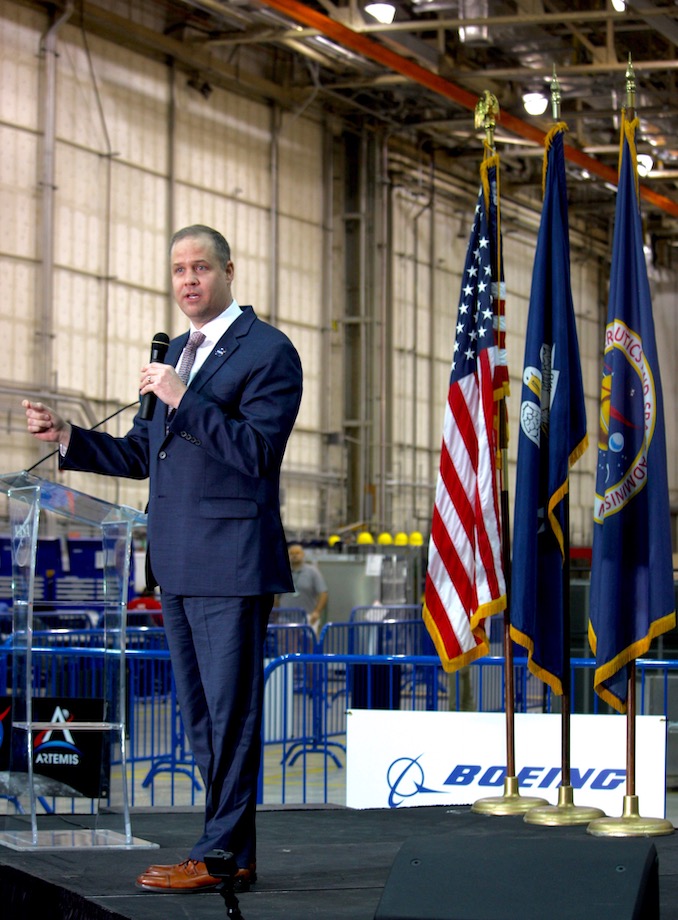
President Trump signed an executive order in April outlining a policy that the United States does not view space as a “global commons. The order reinforced the 2015 law signed by President Obama that giving U.S. citizens and companies the right to mine and exploit resources harvested from other bodies in space.
The policy runs counter to the 1979 Moon Treaty, which states that the moon and its natural resources are the “common heritage of mankind.” The Moon Treaty adds that an international framework is needed to govern the exploitation of lunar resources “when such exploitation is about to become feasible.”
But only 18 nations are parties to the 1979 Moon Treaty, which has not been signed or ratified by the United States, China, or Russia.
Bridenstine said Friday that NASA wants to ensure there is a “strong legal framework grounded in international law” that allows individuals and companies to pursue private interests at the moon.
“What we’re trying to do is make sure that there is a norm of behavior that says the resources can be extracted, and that we’re doing it in a way that is in compliance with the Outer Space Treaty,” Bridenstine said. “And we’re doing it in a way people cannot interfere with your effort to extract those resources.”
Earlier this year, NASA outlined the Artemis Accords, principles which the agency’s international partners will be expected to follow in lunar exploration. The principles include the peaceful exploration of the moon, transparency, interoperability, a pledge of emergency assistance, the registration of space objects, and the public release of scientific data.
“These norms of behavior … eventually become binding international law,” Bridenstine said. “This is a this is a trail that needs to be blazed, and I think the United States of America needs to lead here, and then those norms of behavior ultimately inform the international law that will make sure that space is sustainable for the long term.”
Some scientists have questioned how NASA will implement planetary protection guidelines in an era of mining and other loosely-regulated commercial activity in space. Planetary protection is focused on preventing spacecraft, and eventually humans, from interfering with areas that might harbor extraterrestrial life. The guidelines are more stringent on worlds like Mars than the moon.
In July, NASA announced it was ending planetary protection requirements for missions that land on most locations on the lunar surface. Areas around the poles, which harbor water ice, and the historic Apollo landing sites will remain under a higher category of planetary protection.
Bridenstine said Thursday that although NASA is not a regulatory agency, it can set expectations for private companies.
“If you want to be with us when we go to the moon, if you want to be a private company that can have NASA as a customer, if you want to be with us when we go to Mars, then there are certain behaviors that you have to adhere to,” Bridenstine said.
The request for proposals NASA released Thursday is open to U.S. and international companies. Proposals are due Oct. 9, and NASA may make one or more awards, according to Stephanie Schierholz, an agency spokesperson.
The companies that win awards will gather lunar soil or rocks from any location on the moon, and provide imagery to NASA of the collection and the collected material, along with data identifying where the material was captured. The companies will then transfer ownership of the samples to NASA in place on the moon.
Bridenstine said Thursday NASA anticipates paying between $15,000 to $25,000 for between 50 and 500 grams of lunar soil. The final prices will be determined by the results of the competition, according to Schierholz.
If a company gathers more than 500 grams, they could sell the rest to other countries, companies, or private individuals, Bridenstine said. And there could be further competitions for companies to gather lunar soil and sell it to NASA.
In 2018, NASA established the Commercial Lunar Payload Services program to set up a series of competitions for companies to bid for contracts to ferry scientific instruments to the moon. NASA selected 14 U.S. companies to be eligible for the CLPS contract awards, and the agency has awarded four robotic lunar lander missions to date.
The first CLPS missions — in development by Astrobotic and Intuitive Machines — are scheduled for launch to the moon in 2021.
Eligibility for the lunar soil challenge announced Thursday will not be limited to CLPS providers. Other U.S. companies and international groups will be able to bid, Bridenstine said.
“What we’re trying to do is establish the norms of behavior to create the regulatory certainty so that companies out there will capitalize and move forward on these programs,” Bridenstine said. “We’re trying to prove the concept that that resources can be extracted and they can be traded, and not just traded among companies or individuals, but also among countries and across borders.
“I would say the starting point is the water ice,” he said. “That’s where a lot of private companies are going to want to go and get that water ice, and then sell it to us as an agency or other private companies that are using the moon as a destination for all kinds of different capabilities.”
Email the author.
Follow Stephen Clark on Twitter: @StephenClark1.

